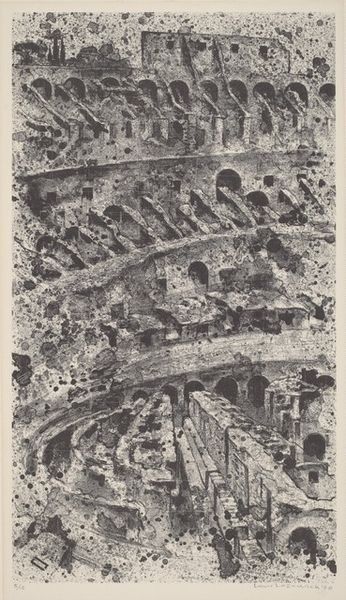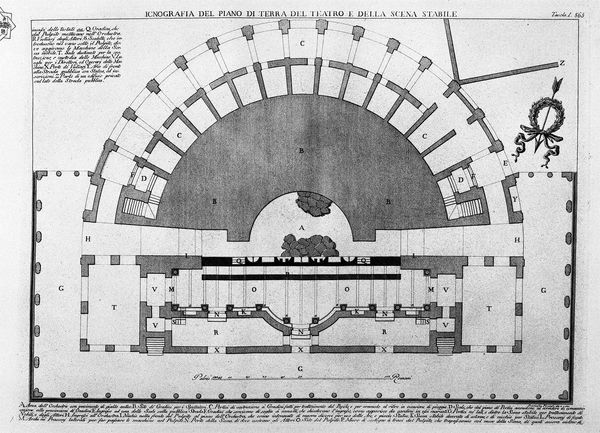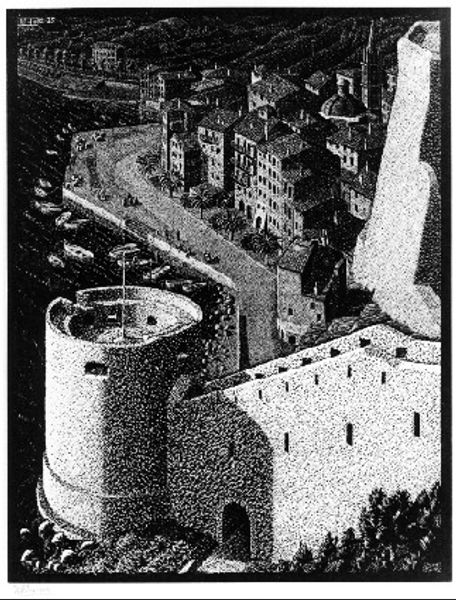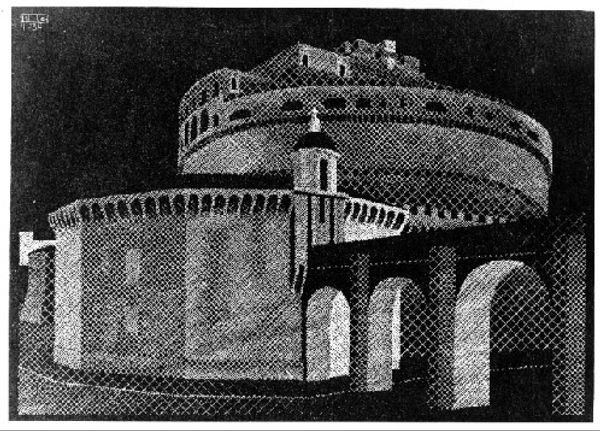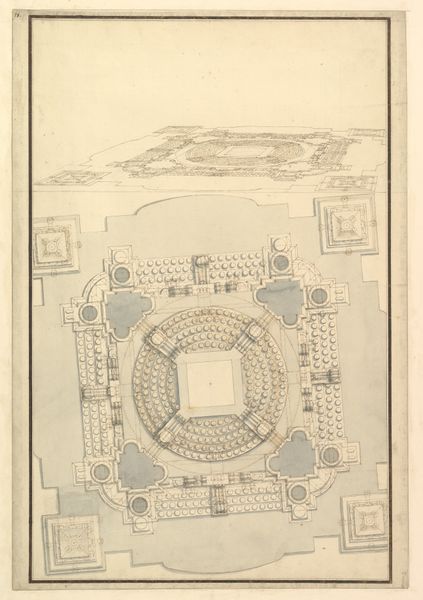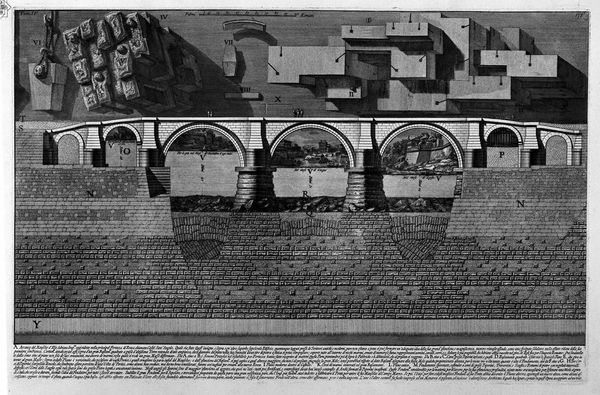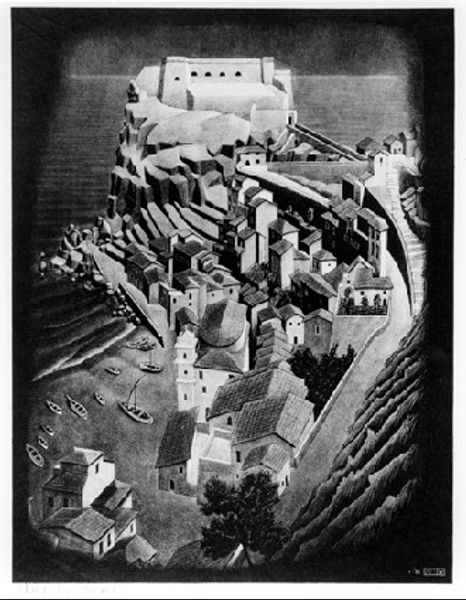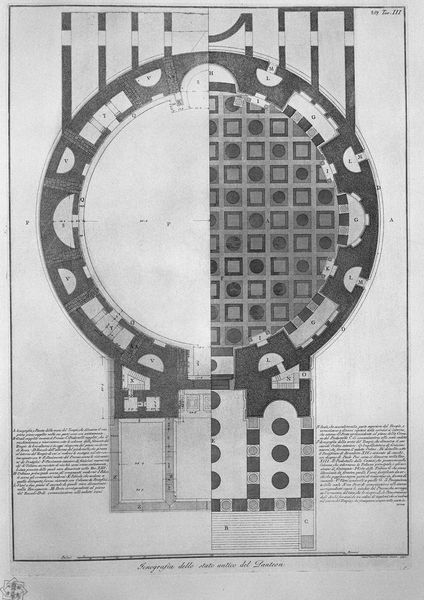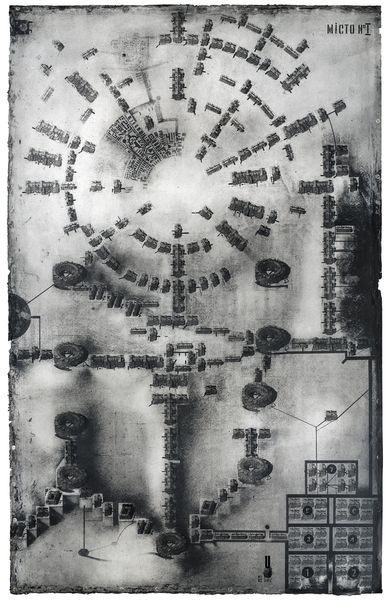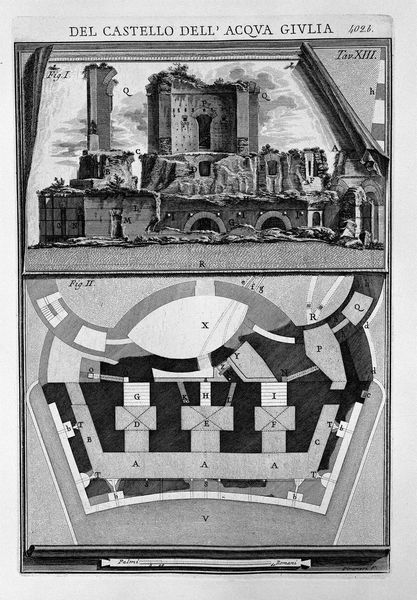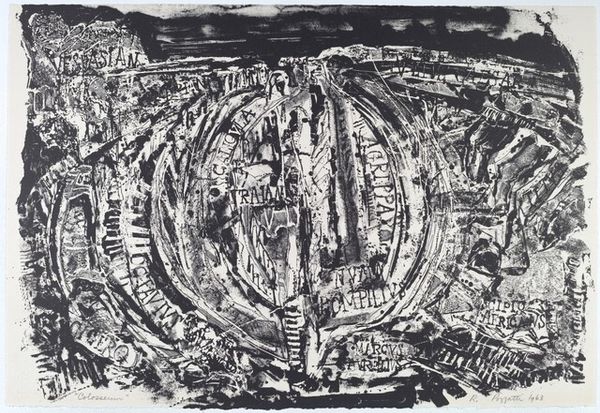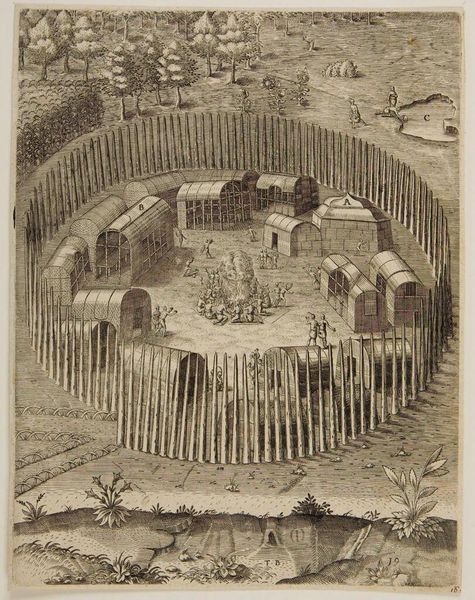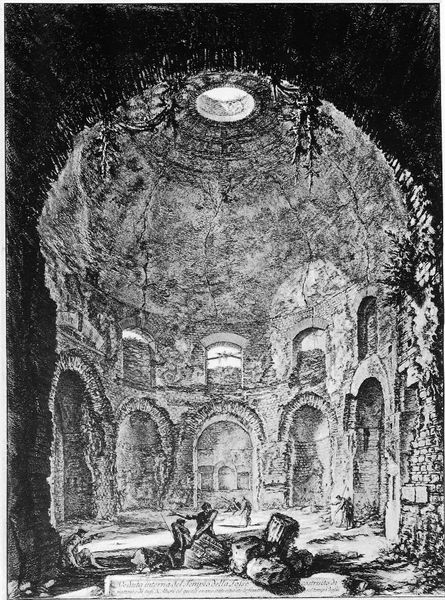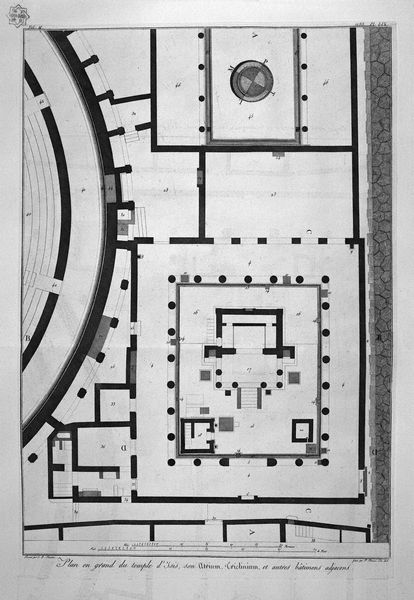
lithograph, print, engraving
#
lithograph
# print
#
form
#
geometric
#
carved
#
abstraction
#
line
#
cityscape
#
engraving
#
modernism
Dimensions: image: 27 x 37.5 cm (10 5/8 x 14 3/4 in.) sheet: 41 x 53.7 cm (16 1/8 x 21 1/8 in.)
Copyright: National Gallery of Art: CC0 1.0
Editor: This is "Where Gladiators Fought," a 1972 lithograph by Louis Lozowick. It's quite striking; the way the light and shadow play across the arena makes it feel both monumental and desolate. What symbolic meaning do you find in this depiction? Curator: It’s evocative, isn't it? Lozowick’s choice to portray this amphitheater, not in its prime but as a ruin, speaks volumes. Think about it: what did the arena signify in its day? Power, spectacle, the control of life and death. Now look at it, crumbling. The arena's eroded form points toward the decay of power. The lithograph transforms into a potent meditation on time and the ephemeral nature of human endeavors. What kind of feelings does this arena incite within you? Editor: I feel a certain melancholy, a sense of loss for a grand past that's now just fragments. There's also a stark contrast; even in ruin, it holds this impressive, almost geometric form. Curator: Indeed. That geometric rigor—the perfect circle collapsing—represents something significant, doesn't it? Even in its ruined state, the arena evokes both terror and wonder in our collective memory. Do you think its violent history enhances or diminishes this sense of wonder? Editor: That’s a challenging thought, it could go both ways. Knowing what happened there creates an unease, but maybe that also makes us more reflective about history. Curator: Precisely. The symbols linger; the echoes of past glory and brutality are held in those stones, shaping how we experience the space. Lozowick, through this print, offers us a space for remembrance and contemplation. Editor: I never considered how deeply the history of a place can be embedded in its image. I now see beyond the physical representation of the Colosseum and appreciate how this single print speaks about the fragility of power and permanence of history. Curator: And hopefully, that is something you will carry with you moving forward. Visual literacy is, in essence, historical awareness.
Comments
No comments
Be the first to comment and join the conversation on the ultimate creative platform.
